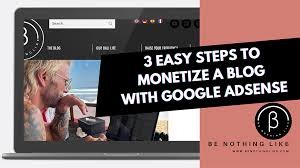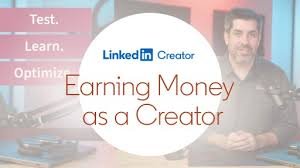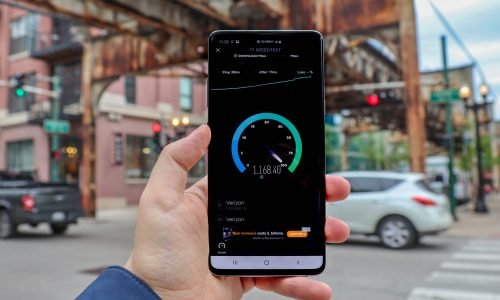The Best Ad Networks for Website Monetization: Which One Fits Your Business
If you’re looking to monetize your website, ad networks can provide a powerful revenue stream by displaying ads on your site. These networks connect advertisers with publishers (like you), and you can earn money through clicks, impressions, or other actions that users take with the ads. But with so many ad networks available, how do you know which one is the best fit for your business? Whether you’re a blogger, an e-commerce store owner, or a niche website creator, choosing the right ad network is crucial for maximizing your earnings. In this post, we’ll explore the best ad networks for website monetization in 2025 and help you figure out which one suits your website and audience the best. 1. Google AdSense: The Industry Leader When it comes to ad networks, Google AdSense is one of the most well-known and widely used platforms. It’s easy to set up, offers high-quality ads, and provides a significant amount of control over ad placement. Plus, the sheer number of advertisers that Google works with means you’ll have a steady stream of ads. Best for: Websites with decent traffic that cater to a wide variety of topics. Pros: Cons: How to Get Started: Simply apply for AdSense, place their ad code on your site, and start earning money from ads that are automatically served to your audience based on their interests. 2. Media.net: A Strong Alternative to AdSense Media.net is a great alternative to Google AdSense and is run by Yahoo and Bing. It specializes in contextual ads, which means it places ads that are directly relevant to the content on your website. It’s especially effective for content-rich websites like blogs, news sites, and articles. Best for: Content-driven websites (e.g., blogs, news websites). Pros: Cons: How to Get Started: After applying and getting approved, Media.net provides ad units that you can place on your site. They offer various ad formats, including display ads, in-text ads, and native ads. 3. Ezoic: For Advanced Monetization with AI Ezoic is a premium ad network that uses AI to optimize ad placement and maximize revenue for your website. It combines the power of multiple ad networks to ensure you’re getting the highest-paying ads available. Ezoic also offers tools to improve your website’s speed and user experience. Best for: Websites with moderate to high traffic, particularly those looking for advanced features and AI-driven optimization. Pros: Cons: How to Get Started: After applying and getting approved, Ezoic uses an AI-driven platform to optimize your ads. You can also experiment with different ad placements to see what works best for your audience. 4. PropellerAds: High Revenue for Smaller Sites PropellerAds is an ad network known for its excellent ad performance and flexibility, particularly for websites that are just starting out or have lower traffic. It specializes in pop-unders, push notifications, and display ads, all of which can drive good revenue for smaller sites. Best for: Smaller websites, especially in niche markets or those just starting out. Pros: Cons: How to Get Started: After signing up for PropellerAds, you’ll be given access to ad formats that you can place on your website. It’s perfect for websites with lower traffic who want to start earning revenue. 5. AdThrive: Premium Ads for High-Traffic Websites AdThrive is a premium ad network that offers high-paying ads for content-heavy websites. It’s well-known for providing superior customer support and high RPMs (Revenue Per Thousand Impressions). AdThrive works best for websites with a lot of traffic, particularly in lifestyle, parenting, food, and home decor niches. Best for: Established websites with high traffic, especially in lifestyle, home, or parenting niches. Pros: Cons: How to Get Started: Apply for AdThrive through their website. After approval, you’ll work with their ad team to place the best ads for your site and optimize them for maximum revenue. 6. Amazon Native Shopping Ads: Perfect for E-Commerce Sites If you run an e-commerce website or blog and want to monetize your traffic by recommending products, Amazon Native Shopping Ads can be an excellent choice. These ads display relevant Amazon products directly on your website, and you earn a commission when visitors purchase anything through your affiliate link. Best for: E-commerce sites or blogs focused on product recommendations. Pros: Cons: How to Get Started: Sign up for Amazon Associates, and use the Native Shopping Ads tool to display products on your site. 7. Revcontent: Native Ads with High Engagement Revcontent is an ad network known for native advertising, which blends in seamlessly with your website’s content. These ads typically result in higher engagement and click-through rates compared to traditional display ads. Revcontent offers high CPMs and works best for websites with strong content engagement. Best for: Websites with a lot of content and engaged audiences. Pros: Cons: How to Get Started: Apply to Revcontent and, once approved, integrate their native ad widgets into your website. Conclusion: Choosing the Right Ad Network When it comes to monetizing your website, selecting the right ad network is crucial for maximizing your earnings. The best ad network for you will depend on your website’s traffic, niche, and the type of ads that align with your audience. Whether you’re just starting out or have an established website, there’s an ad network that can help you generate revenue. Start by experimenting with one or two networks, and be sure to track your performance to see which one works best for your site. With the right strategy, ad monetization can provide a significant revenue stream for your business in 2025. Related Tags:




















